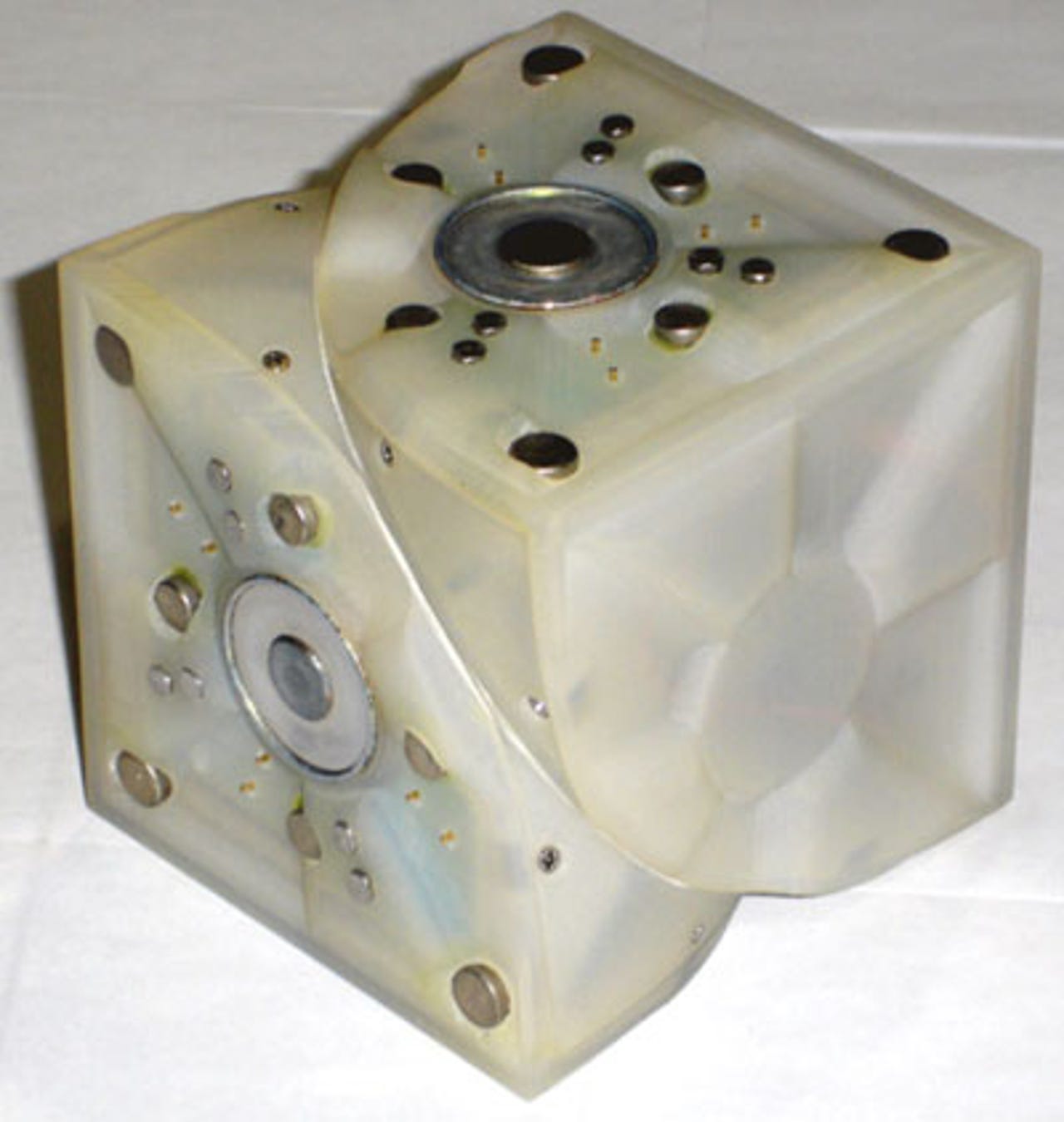Images: How to clone a robot


The modules of Cornell University's self-replicating robot are cubes about 4 inches on a side. They are able to swivel along a diagonal.
This sequence of photos, taken from a video, shows the process of self-replication. The robot removes one section of itself which becomes the base for the new robot. The remaining three cubes then pick up additional cubes from feeding stations to build the new robot.
This cutaway drawing shows the robots' motor mechanism.
This column of cubes is held together by magnets and is able to bend and twist to pick up and set down individual cubes.
The Cornell University research team was led by mathematics graduate student Bryant Adams (left), Hod Lipson (center) and mechanical engineeering graduate student Victor Zykov.